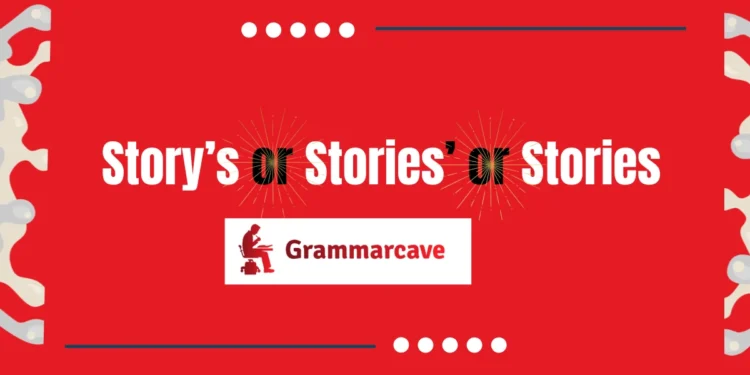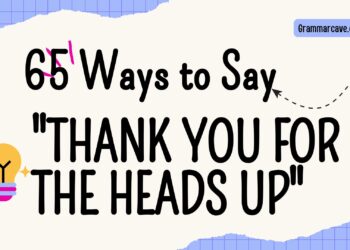Have you ever paused mid-sentence, unsure if that tiny apostrophe belongs before or after the “s”? If it even needs to be there at all, or maybe you’ve questioned it? Don’t worry—you’re not alone. About grammar, as someone passionate, I’ve seen writers of all skill levels trip over these tricky little pieces of information. Whether it’s “stories,” “stories’,” or just plain “stories,” figuring out the correct form can be confusing. So, let’s break it all down and bring clarity to this common grammatical puzzle.
The Singular Possessive: Story’s
When referring to something owned by a single person, we use the singular possessive form: the story’s. That apostrophe+s combo shows that one specific story has something-be, be it characters, themes, or an emotional twist.
Examples
- The story’s pacing was perfect.
- I loved the story’s message.
- The story’s narrator was unforgettable.
Each sentence describes a quality that belongs to just one story. It’s a simple rule, yet it often confuses, especially in fast writing or editing.
The Plural Possessive: Stories
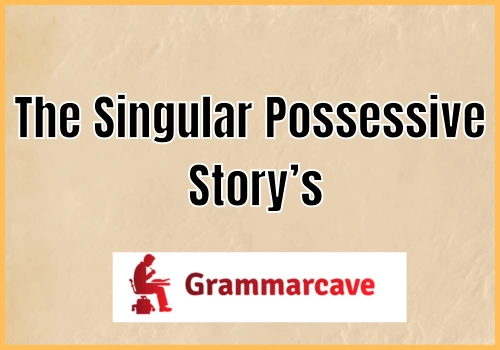
Now, what if we’re referring to more than one story, and they collectively own or share something? That’s when we use the plural possessive form: stories’. We pluralize “story” into “stories,” then just add an apostrophe at the end.
Examples
- The stories’ plots varied wildly.
- I admired the stories’ originality.
- The stories’ authors will be interviewed next week.
The difference may be subtle on paper, but it changes the meaning completely—this isn’t one story, but multiple. Also know about Thomas’s or Thomas.
Just Plain Stories: No Apostrophe Needed
Sometimes, you don’t need any apostrophe at all. When simply referring to more than one story, without ownership or possession, you just use the plural form: stories.
Examples:
- She reads detective stories.
- The anthology contains short stories by local writers.
- I’ve written several stories this year.
No ownership = no apostrophe.
Common Confusions and How to Dodge Them
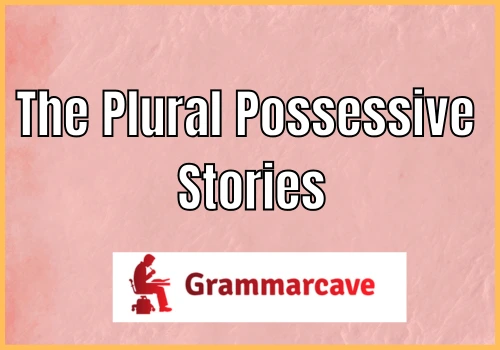
Many people confuse:
- Story’s (singular possessive)
- Stories’ (plural possessive)
- Stories (plural form)
It’s easy to see why—these forms are nearly identical, but their usage depends on two things: how many and who owns what. Asking the right questions (“Is it one or many? Is there ownership?”) can help avoid missteps.
Getting Tripped Up: Singular vs. Plural Possessives
When pluralizing possessive forms, people make one of the biggest mistakes by mixing them up. Let’s look at a couple of examples:
- Not clear ❌: The story’s beginnings were interesting.
- (This implies one story had multiple endings, which might not be the intended meaning.)
- Now it makes sense ✅: The stories’ beginnings were confusing.
- (Here, we’re referring to endings from multiple stories.)
Precision matters. It shapes how your audience interprets your message.
The Infamous Greengrocer’s Apostrophe
The common mistake of adding apostrophes, particularly in plurals, where they don’t belong.
Example:
- Not clear ❌: I bought three apples.
- Now it makes sense ✅: I bought three apples.
Mostly, this kind of error pops up in handwritten signs or menus.
Possessive Pronouns:Apostrophe-Free Zone
They don’t need an apostrophe so possessive pronouns like its, his, hers, theirs, yours, and ours already show ownership.
- Not clear ❌: The dog shakes its tail. (This means “it is tail.”)
- Now it makes sense ✅ : The dog shakes its tail.
It’s a small but essential piece of information, especially since “it’s” is a contraction for “it is.”
Real-Life Examples:Bringing It Together
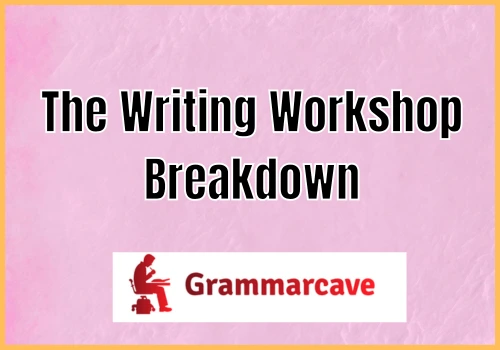
Let’s walk through a few practical scenarios to see these rules in action.
The Literary Magazine Example
Picture yourself as the editor of a literary magazine. You’re reviewing an email draft.
“I’m really pleased with the stories’ depth this month. Each story’s unique perspective adds value, and our readers’ section, filled with submitted stories, is a highlight.”
This example includes plural possessive (stories’), singular possessive (story’s), and plain plural (stories)—all used correctly based on context.
The Bookstore Signage Challenge
If you’re designing signs for bookstore sections, here’s what they might look like:
- Children’s Stories → Books for children (possessive noun, “children” is plural but irregular)
- Each Story’s Journey → Focused on individual narratives (singular possessive)
- Authors’ Corner: Where Stories’ Beginnings Are Shared → Multiple authors and multiple stories (plural possessive)
Correct punctuation helps keep your signage polished and professional.
The Writing Workshop Breakdown
In a writing class or workshop, you might hear:
- We’ll explore each story’s structure. → One story per student.
- Let’s analyze the stories’ emotional impact. → Several stories.
- Keep writing your stories. → No possession, just plural.
- How does the story’s arc compare to the story’s arcs? → Singular vs. plural comparison.
When giving feedback or discussing writing techniques, these distinctions clarify exactly what you’re referring to.
Why Context Is Everything
Choosing the right form isn’t just about rules—it’s about context. Ask yourself:
- Are we talking about one or many?
- Is there possession involved?
- Who owns what in the sentence?
If you can answer these, you’ll almost always choose the correct form.
Why It Matters
Some might think, “Does this really make a difference?” Absolutely. These tiny marks have a big impact on clarity and professionalism.
Example:
- The story’s endings confused me. → ❌ Not clear
- The stories’ endings confused me. → ✅ Now it makes sense
Even small mistakes like these can distract readers, lead to misinterpretation, or make your writing appear sloppy.
Tips for Getting It Right
Here are some quick strategies to help you get more comfortable with these forms:
- Read it out loud – Your ears may catch what your eyes miss.
- Visualize it – Picture what’s owning what.
- Break it down – Identify the noun and see if something belongs to it.
- Practice often – Like any skill, mastering this takes repetition.
Conclusion
The difference between stories, stories, and stories may seem tiny, but it plays a massive role in conveying your message with precision. Mastering these subtleties of language, in the end, isn’t about showing off your grammar skills to impress others. It’s about respecting your readers, giving your ideas the expression they deserve, and valuing precise clarity. Whether you’re enclosing an article, writing a novel, or just sending an email, your grasp of these forms will serve you well, ensuring that your stories, in whatever form they appear.
Language is alive, always evolving—remember that. What matters most isn’t strict rule-following, but communicating effectively. These forms are correctly used and understood; you’re not just obeying grammar rules. Your readers engage with your ability to share your stories, encouraging them, or better yet, the messages in your stories, with clarity and impact.
It’s about making sure your meaning comes through clearly and loud; this isn’t about being a grammar snob. It’ll become second nature when you’re comfortable with these forms. Your writing won’t just be grammatically correct—it’ll be sharp, polished, and positively meaningful.
When you’re wondering where the apostrophe goes and find yourself stuck, take a second to think: Is it one or many? Is there possession? Let the context lead you, and trust that clarity will follow.

